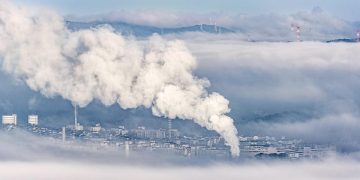Breaking News: The Latest Updates on US Climate Policy and Action Plans
Climate change is a pressing issue that affects everyone on the planet. In recent years, the United States has seen a shift in climate policy and action plans under the new administration. This article will provide an overview of the latest updates on US climate policy and action plans, covering key initiatives, regulations, and commitments.
Key Initiatives and Regulations
One of the most significant developments in US climate policy is the rejoining of the Paris Agreement by President Joe Biden. The Paris Agreement is an international treaty aimed at limiting global warming to well below 2 degrees Celsius above pre-industrial levels. By rejoining the agreement, the US has signaled its commitment to tackling climate change on a global scale.
In addition to rejoining the Paris Agreement, the Biden administration has also announced a series of executive orders aimed at addressing climate change. These orders include a review of the previous administration’s environmental rollbacks, a commitment to conserving 30% of US lands and waters by 2030, and a plan to achieve net-zero greenhouse gas emissions by 2050.
Furthermore, the Biden administration has proposed a $2 trillion infrastructure plan, known as the American Jobs Plan, which includes significant investments in clean energy, electric vehicles, and climate resilience. This plan aims to create millions of jobs while also reducing greenhouse gas emissions and building a more sustainable economy.
Commitments and Targets
Alongside these initiatives and regulations, the US has also made several commitments and targets to address climate change. One of the key commitments is to achieve a 50-52% reduction in greenhouse gas emissions by 2030 compared to 2005 levels. This target is in line with the goals of the Paris Agreement and represents a significant step towards decarbonizing the economy.
In addition to emissions reductions, the US has also committed to investing in clean energy and infrastructure to support a transition to a low-carbon economy. This includes expanding renewable energy sources, such as wind and solar power, and improving energy efficiency in buildings and transportation.
Furthermore, the US has pledged to increase funding for climate adaptation and resilience efforts to protect communities from the impacts of climate change. This includes investments in infrastructure, water management, and disaster preparedness to help communities withstand extreme weather events and rising sea levels.
Challenges and Opportunities
While the US has made significant progress in addressing climate change, there are still challenges ahead. One of the key challenges is the transition away from fossil fuels towards clean energy sources. This transition will require significant investments in renewable energy infrastructure and technology, as well as support for workers and communities impacted by the shift.
Another challenge is the need for international cooperation to address climate change effectively. While the US has reentered the Paris Agreement, global efforts to reduce emissions and limit global warming will require cooperation from countries around the world. This includes sharing technology, financing climate mitigation and adaptation efforts, and setting ambitious targets for emissions reductions.
Despite these challenges, there are also opportunities for innovation and growth in the clean energy sector. The transition to a low-carbon economy has the potential to create millions of new jobs in renewable energy, energy efficiency, and sustainable infrastructure. By investing in clean energy and sustainability, the US can build a more resilient and prosperous economy for the future.
Conclusion
In conclusion, the latest updates on US climate policy and action plans reflect a renewed commitment to addressing climate change and building a more sustainable future. The Biden administration’s initiatives, regulations, commitments, and targets represent a significant step towards reducing greenhouse gas emissions, investing in clean energy, and enhancing climate resilience.
While there are challenges ahead, including the transition away from fossil fuels and the need for international cooperation, there are also opportunities for innovation and growth in the clean energy sector. By working together to tackle climate change, the US and other countries can build a more sustainable and prosperous world for future generations.
Stay tuned for more updates on US climate policy and action plans as the world continues to address the urgent challenge of climate change.





